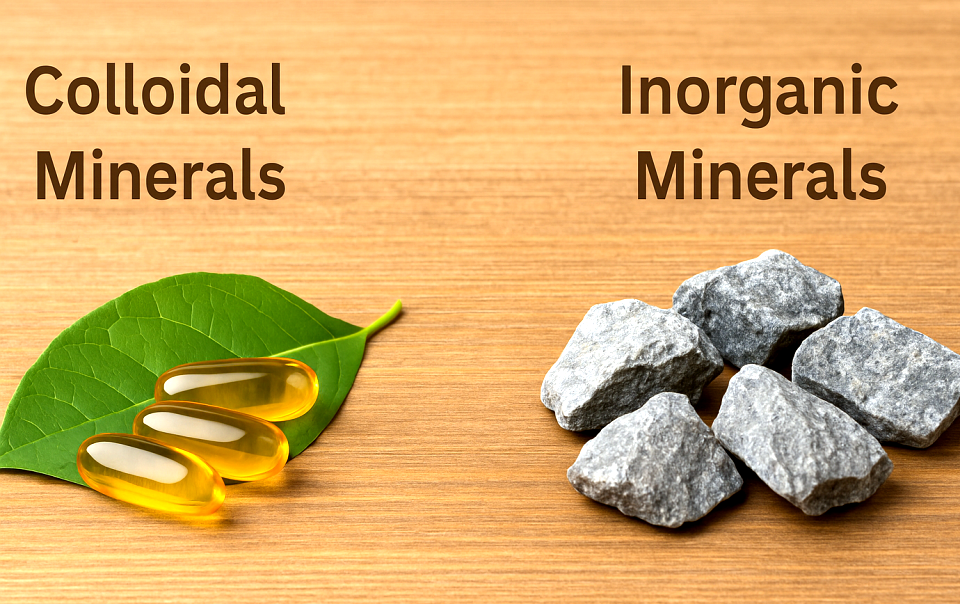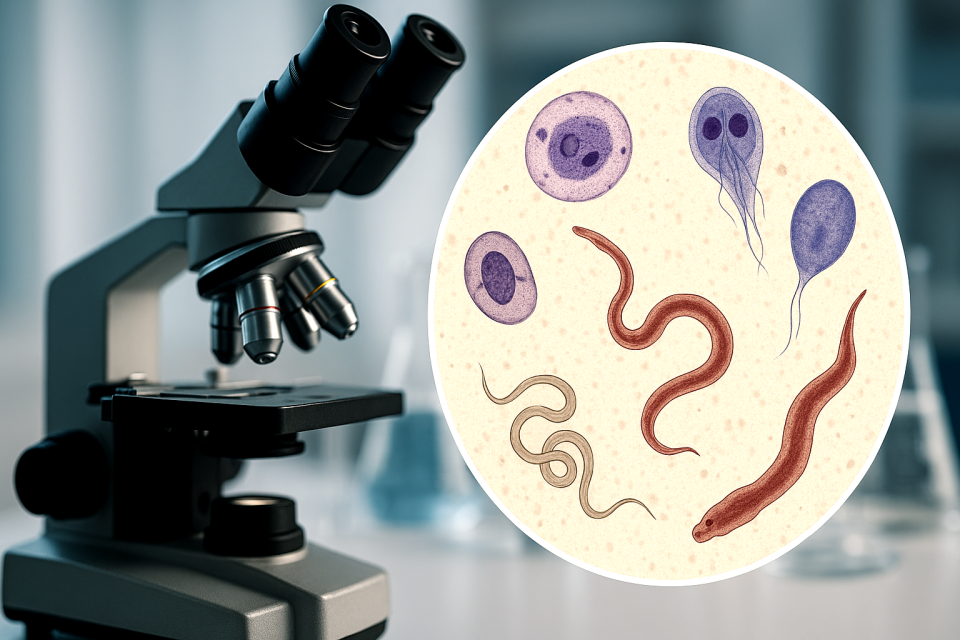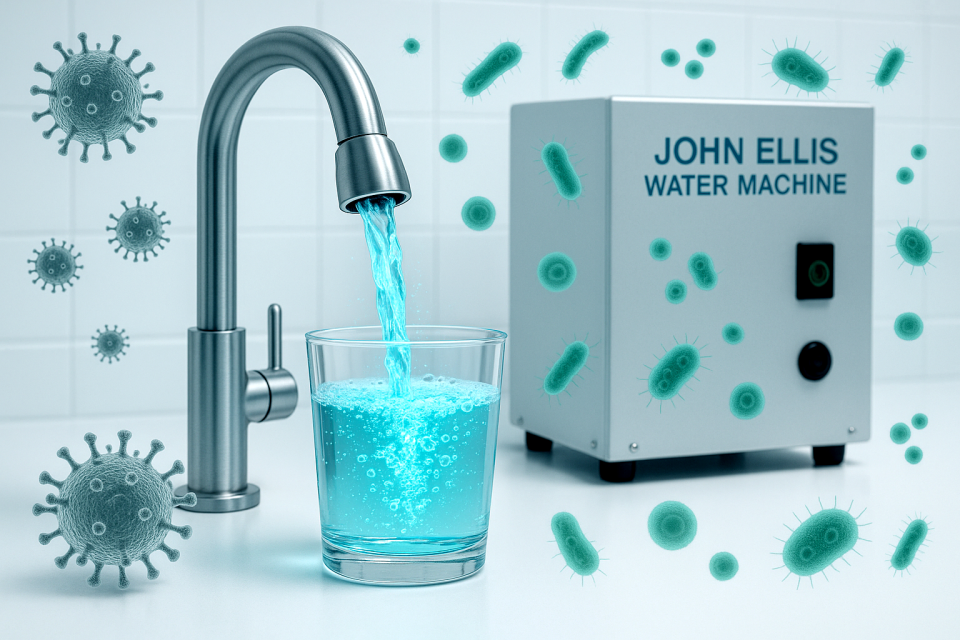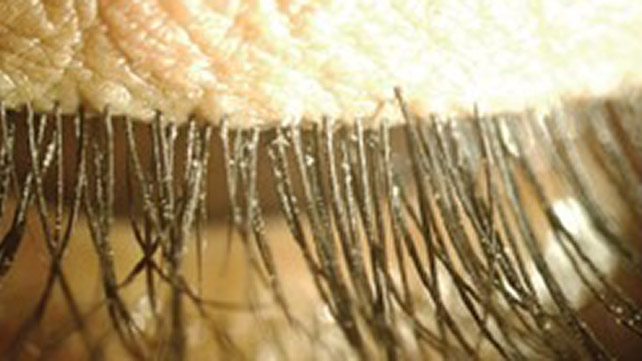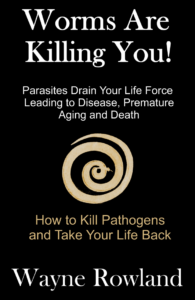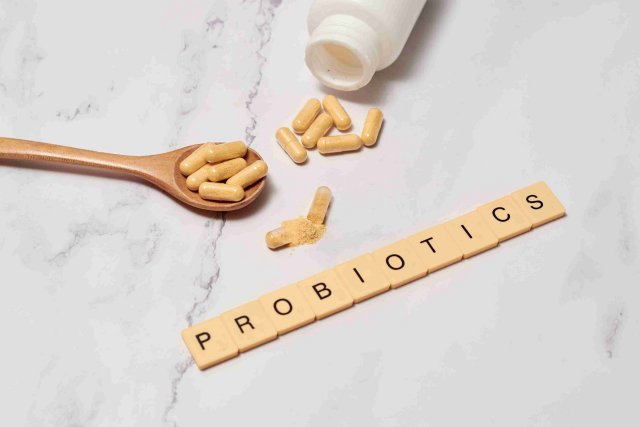Every living person carries parasites. There is no way around it. These microscopic organisms often go unnoticed, yet they play a significant role in human health, contributing to various diseases. Understanding the nature of these parasites, their effects, and potential treatments can empower individuals to better manage their health.
The Impact of Parasites on Human Health
Parasites are more common than most people realize, inhabiting various parts of the human body, including the intestines, skin, joints, and even the eyes. They can lead to a range of health issues, including gastrointestinal disturbances, skin conditions, and systemic diseases. The immune system responds to these invaders and, in doing so, can become overwhelmed, particularly if the parasite population is extensive. This response can also contribute to conditions like leaky gut syndrome, where compromised intestinal walls allow toxins and allergens to enter the bloodstream.
Common Parasites and Their Effects
Worms
Infections like roundworm, hookworm, and pinworm can cause digestive issues, malnutrition, and fatigue. Here is a short list of parasitic worms (though there are thousands of species):
- Roundworms (Nematodes)
- Ascaris lumbricoides: Causes malnutrition, intestinal blockage, and respiratory issues.
- Enterobius vermicularis (Pinworm): Causes intense itching and discomfort, primarily in children.
- Tapeworms (Cestodes)
- Taenia saginata: Leads to digestive issues and malnutrition, transmitted through undercooked beef.
- Echinococcus granulosus: Forms cysts in organs, leading to serious complications like cystic echinococcosis.
- Flukes (Trematodes)
- Schistosoma: Causes schistosomiasis, damaging the liver, intestines, or bladder, and potentially resulting in chronic health issues.
- Fasciola hepatica (Liver Fluke): Causes liver damage and bile duct obstructions.
- Whipworms (Trichuris trichiura)
- Causes abdominal pain, diarrhea, and growth retardation in children.
- Hookworms (Ancylostoma duodenale and Necator americanus)
- Lead to anemia, malnutrition, and developmental issues, especially in children.
- Strongyloides stercoralis
- Causes strongyloidiasis, leading to gastrointestinal symptoms and severe complications in immunocompromised individuals.
These parasitic worms can cause health issues ranging from mild discomfort to severe, life-threatening conditions, particularly in vulnerable populations.
Skin Parasites
Skin parasites can lead to intense itching, resulting in scratching that further inflames the skin and complicates healing. Examples include:
- Scabies Mites: Tiny mites that burrow into the skin, causing intense itching and rashes.
- Lice: Infestations can occur on the scalp (head lice), body (body lice), or pubic area (pubic lice).
- Fleas: Often found on pets, flea bites can irritate humans.
- Ticks: Attach to the skin and may transmit diseases like Lyme disease.
- Chiggers: Microscopic larvae causing itchy red welts after biting.
- Demodex Mites: Normal inhabitants of human skin that can cause issues if they multiply excessively, often leading to rosacea.
Blood-Borne Parasites
Diseases like river blindness and filariasis can have severe consequences, affecting vision and lymphatic health. Common blood-borne parasites include:
- Plasmodium: Causes malaria, transmitted through mosquito bites.
- Trypanosoma: Causes African sleeping sickness (Trypanosoma brucei) and Chagas disease (Trypanosoma cruzi), spread by tsetse flies and triatomine bugs, respectively.
- Leishmania: Causes leishmaniasis, transmitted by sandfly bites.
- Babesia: Causes babesiosis, typically spread by ticks, affecting red blood cells.
- Dirofilaria: Heartworms that can affect dogs and humans, transmitted through mosquito bites.
- Onchocerca volvulus: Causes river blindness (onchocerciasis), transmitted by blackflies.
- Wuchereria bancrofti: Causes lymphatic filariasis, spread through mosquito bites, leading to elephantiasis.
- Toxoplasma gondii: Transmitted through undercooked meat or cat feces, it can infect the bloodstream, particularly in immunocompromised individuals.
- Ehrlichia: Bacteria transmitted by tick bites, causing ehrlichiosis, affecting white blood cells.
- Rickettsia: Another group of bacteria, transmitted by ticks or mites, causing diseases like Rocky Mountain spotted fever.
Spirochetes
Spirochetes are bacteria characterized by their spiral shape and unique motility. They are classified as parasites because they infect hosts and cause disease. Notable spirochetes include:
- Borrelia
- Borrelia burgdorferi: The primary agent of Lyme disease, transmitted by ticks.
- Borrelia hermsii: Causes relapsing fever, spread by soft-bodied ticks.
- Treponema
- Treponema pallidum: Causes syphilis, a sexually transmitted infection.
- Treponema pertenue: Causes yaws, a chronic skin disease.
- Leptospira
- Causes leptospirosis, a disease that can affect various organs and is transmitted through water contaminated with the urine of infected animals.
Threats Posed by Spirochetes
- Chronic Diseases: Infections like Lyme disease can lead to long-term health issues, including joint pain and neurological problems.
- Sexually Transmitted Infections: Treponema pallidum (syphilis) can cause serious complications if untreated, including cardiovascular and neurological problems.
- Zoonotic Diseases: Leptospira can cause severe illness in humans, associated with exposure to infected animals or contaminated water.
- Relapsing Fevers: Caused by certain Borrelia species, leading to recurrent episodes of fever and potential complications.
Spirochetes pose significant health risks, highlighting the importance of prevention, early detection, and treatment.
Lyme author Herb Roi Richards, PhD, says something else to bear in mind is that all of a species’ different variations show similar behavior. Therefore, if one kind of spirochete can be sexually transmitted and further spread through close human interaction, all other forms of spirochetes could potentially be transmitted in the same way. This could explain the thousands of people with Lyme disease who a tick has never bitten.
The sad reality is that, due to the myth that Lyme disease can only be contracted through deer ticks, thousands of Lyme sufferers are being misdiagnosed and treated for conditions they do not have.
Effective Antiparasitic Treatments
There are several antiparasitic medications available to combat these invaders:
- Ivermectin
Originally used for veterinary purposes, ivermectin is now widely recognized for treating various human parasitic infections, including scabies and river blindness. It works by paralyzing parasites and reducing their population in the body. This systemic medication is available by prescription in tablet form (marketed as Stromectol).
- Fenbendazole
Primarily used in veterinary medicine, fenbendazole is effective against a variety of intestinal parasites. While it is mainly intended for animals, some people have explored its off-label use in humans. This medication may help cleanse the intestines of harmful organisms.
- Pyrantel
This medication is effective against several types of worms, including roundworms and pinworms. Available in capsule and liquid forms, pyrantel is often taken as a single dose, making it a convenient option for quick treatment.
- Nitenpyram
Used mainly for treating fleas, nitenpyram is a systemic insecticide that acts quickly to eliminate blood-sucking parasites. It is crucial to address the surrounding environment as well to prevent reinfection.
- Food-Grade Diatomaceous Earth
This natural substance acts as a detoxifier and internal cleanser, helping to eliminate opportunistic parasites. It works by adsorbing toxins and supporting digestive health.
- Super Saturated Potassium Iodide (SSKI)
Super saturated potassium iodide (SSKI) can be applied topically or ingested. According to WebMD, it is commonly used to “loosen and break up mucus in the airways,” aiding in the expulsion of mucus and even lung parasites. This can be particularly beneficial for individuals with chronic respiratory conditions such as asthma, chronic bronchitis, or emphysema, as it serves as an effective expectorant, facilitating easier breathing.
- Chlorine Dioxide
Chlorine dioxide is touted by some as a remedy for various infections, including parasites. While it claims to boost the immune system, caution is advised due to its unregulated status and the potential for side effects.
Re: Chlorine Dioxide
Chlorine dioxide, often referred to as MMS (Master Mineral Solution), has garnered attention for its potential use in combating parasites. Initially popularized by Jim Humble, who claimed it could cure malaria, MMS has become a topic of discussion and debate within medical circles. Humble’s journey with this compound began at the age of 64 and has been marked by challenges stemming from medical regulations.
Users have reported benefits not only for malaria but also for various ailments, including certain types of arthritis and infections caused by bacteria, viruses, fungi, and molds. There are anecdotal accounts of its effectiveness against conditions like herpes simplex, AIDS, and even Morgellons disease.
Despite its potential benefits, chlorine dioxide has a notably unpleasant taste. However, CDS 3000, a newer pre-mixed version, aims to make consumption easier. This supplement is made using a two-part water purification system that combines distilled water, sodium chlorite, and an acid activator to produce chlorine dioxide—a compound known for its ability to eliminate harmful microorganisms.
Some users have discovered that taking a few drops of the unactivated sodium chlorite solution mixed in water allows stomach acid to activate it, potentially targeting infections more effectively than consuming the activated solution directly.
It’s important to note that antioxidants and probiotics can neutralize chlorine dioxide, so many users recommend scheduling their intake of vitamins and supplements separately from chlorine dioxide.
For those considering this supplement, it is advised to start with one drop of activated chlorine dioxide in four or more ounces of distilled water twice daily and gradually increase to three drops per hour over an eight-hour period. However, some individuals choose to take higher doses, exceeding the recommended amounts, in pursuit of greater results.
As with any treatment, it is crucial to consult natural healthcare professionals before starting any chlorine dioxide protocol, especially given its controversial status. Each person’s response may differ, so finding a suitable regimen requires careful consideration and self-experimentation.
Parasites, including parasitic worms, predate humans by hundreds of millions of years. Ancient indigenous cultures discovered natural treatments for dealing with parasites, which were adopted by folk medicine and homeopathic remedies before the dominance of modern medicine.
Here are some natural and herbal compounds that have been traditionally used to rid the body of worms and parasites:
- Garlic
- Known for its antimicrobial properties, garlic contains compounds like allicin and ajoene that can kill various types of parasites, including amoebas, pinworms, and hookworms.
- Papaya Seeds
- Papaya seeds contain enzymes that can destroy intestinal worms and tapeworms. They are often used in traditional medicine for deworming.
- Cucumber Seeds
- These seeds have been used to treat tapeworms in the digestive tract due to their enzyme content that targets parasitic worms.
- Black Walnut
- The hulls of black walnut trees contain juglone, tannins, and other compounds that are effective against intestinal parasites.
- Wormwood
- This herb has been used in traditional medicine to expel worms and parasites from the body. It contains compounds like thujone that are toxic to parasites.
- Cloves
- Cloves have antimicrobial and antiparasitic properties and have been used to treat parasitic infections.
- Oregano Oil
- Oregano oil contains compounds like carvacrol and thymol that have been shown to be effective against various parasites.
- Pumpkin Seeds
- Pumpkin seeds are traditionally used to treat tapeworms and other intestinal parasites due to their cucurbitacin content.
- Neem
- Neem has been used in Ayurvedic medicine for its antiparasitic properties. It can help eliminate worms and other parasites from the body.
- Cinnamon
- Cinnamon has been used in folk medicine to treat parasitic infections due to its antimicrobial properties.
- Goldenseal
- Often used in traditional medicine, goldenseal contains berberine, which has antiparasitic properties.
- Ginger
- Ginger is known for its digestive benefits and can help eliminate intestinal worms. It also has anti-inflammatory properties that support overall gut health.
- Thyme
- Thyme contains thymol, which has antimicrobial and antiparasitic effects. It’s been used historically to combat parasites.
- Diatomaceous Earth
- This natural substance is made from fossilized aquatic organisms and can help eliminate intestinal parasites by physically damaging their exoskeletons.
- Turmeric
- Turmeric contains curcumin, which has antiparasitic properties and can help boost the immune system.
- Olive Leaf Extract
- Known for its antiviral and antimicrobial properties, olive leaf extract can also help fight off parasites.
- Pau d’Arco
- This herb from the Amazon rainforest has been traditionally used for its antimicrobial and antiparasitic properties.
- Berberine
- Found in various plants like barberry, goldenseal, and Oregon grape, berberine is a powerful compound that can help fight intestinal parasites.
- Mugwort
- Used in traditional Chinese medicine, mugwort has been used to treat intestinal worms and improve digestion.
- Peppermint
- Peppermint has been used to soothe digestive issues and can help expel parasites from the intestines.
- Eucalyptus
- Eucalyptus leaves have antimicrobial properties and have been used to treat parasitic infections.
- Aloe Vera
- Known for its soothing properties, aloe vera can also help eliminate intestinal parasites.
- Gentian Root
- Traditionally used to treat digestive disorders, gentian root has compounds that can help rid the body of parasites.
- Tansy
- Tansy has been used in folk medicine to treat intestinal worms, though it should be used with caution as it can be toxic in large amounts.
- Betel Nut
- Used in traditional medicine, betel nut has been known to have antiparasitic effects, particularly against intestinal worms.
- Montana Yew Tips
- Derived from the Pacific Yew tree (Taxus brevifolia), Montana Yew Tips have been traditionally used by indigenous cultures for their medicinal properties, including antimicrobial and antiparasitic effects.
- Turpentine
- Turpentine has been historically used in traditional medicine for its antiparasitic properties, particularly in the treatment of myiasis (infestation of the body by fly larvae).
Remember: While these natural remedies have been used for centuries, it’s important to consult with a natural healthcare professional before using them, especially if you suspect a parasitic infection or have underlying health conditions.
Additional Strategies for Prevention, Recovery, and Environmental Hygiene
- Avoid Scratching
- Scratching can exacerbate skin issues and compromise the immune response, making it harder for your body to fight off parasites. Keeping lesions clean and leaving them alone allows the immune system to function more effectively.
- Diet and Supplements
- Maintaining a healthy diet rich in antioxidants and probiotics can support overall gut health. Supplements like L-glutamine may help restore gut integrity, especially for those with leaky gut syndrome.
- Environmental Hygiene
- Regular cleansing and disinfection can reduce the risk of parasitic reinfection. If you have pets, ensure they are treated for parasites to minimize the risk of transmission.
Prevention
- Hand Hygiene
- Wash your hands thoroughly with soap and water before eating, after using the bathroom, and after handling pets.
- Proper Food Handling
- Cook meat thoroughly and wash fruits and vegetables before consumption to reduce the risk of ingesting parasites.
- Safe Water
- Drink only purified or bottled water, especially when traveling in areas where water contamination is a concern.
- Personal Hygiene
- Regularly clean under fingernails and avoid biting nails, as this can be a route of transmission for parasites.
- Protective Clothing
- Wear shoes and protective clothing when walking in areas where parasites like hookworms are common in the soil.
Recovery
- Herbal Remedies
- Consider natural antiparasitic herbs like wormwood, black walnut, and cloves, which can help expel parasites.
- Regular Deworming
- In areas where parasitic infections are common, regular deworming under medical supervision can be beneficial.
- Hydration
- Ensure adequate hydration to support the body’s detoxification processes and maintain overall health.
- Immune Support
- Incorporate immune-boosting foods and supplements like vitamin C, zinc, and echinacea to help the body fight off parasites.
- Stress Management
- Chronic stress can weaken the immune system. Practices like yoga, meditation, and deep breathing can help manage stress levels.
- Sleep Hygiene
- Ensure you get adequate sleep to support your body’s natural healing processes.
- Regular Medical Check-Ups
- Regular visits to a healthcare provider can help monitor and address any signs of parasitic infections early.
Environmental Hygiene
- Laundry Practices
- Wash bedding, towels, and clothing in hot water to kill any potential parasites.
- Clean Living Spaces
- Regularly vacuum and dust living spaces to remove any eggs or larvae that may be present.
- Safe Disposal of Waste
- Ensure that human and animal waste is disposed of properly to prevent contamination of soil and water sources.
- Insect Control
- Use screens, insect repellents, and other measures to reduce the risk of insect-borne parasites.
The prevalence of parasites in humans is a sobering reality that can lead to various health complications. However, with awareness and appropriate treatment, individuals can effectively manage their health and mitigate the risks associated with these invaders. By combining medical treatment with lifestyle modifications, it is possible to reclaim health and well-being from the grasp of parasites.
Resources
1. Centers for Disease Control and Prevention (CDC)
- General information on parasites, their transmission, and prevention strategies.
2. World Health Organization (WHO)
- Overview of parasitic diseases, including schistosomiasis and lymphatic filariasis.
3. WebMD
- Information on Super Saturated Potassium Iodide (SSKI) and its applications for lung conditions and parasites.
4. National Institutes of Health (NIH)
- Research on herbal remedies, including wormwood, cloves, and black walnut for parasitic infections.
5. National Center for Biotechnology Information (NCBI)
- Studies on garlic and its antimicrobial properties against parasites.
6. The Merck Veterinary Manual
- Details on veterinary uses of fenbendazole and ivermectin, with information on human off-label applications.
7. Lyme Disease Alternative Treatments
- Herb Roi Richards, PhD, and Taylore Vance’s documentation efforts resulting from their Chronic Lyme conferences, including natural remedies, holistic, and herbal approaches.
8. The Master Mineral Solution of the Third Millennium
- Jim Humble’s background on chlorine dioxide (MMS) and its reported uses.
9. Healthy Alternative Chlorine Dioxide Uses
- Paris Humble’s guide manual for non-pharmacological health restoration.
10. Natural Medicine Journal
- Discussion of antiparasitic herbs like neem, turmeric, and berberine in integrative medicine.
11. Harvard Health Publishing
- Insights into stress management techniques and their role in supporting immune health.
12. Journal of Parasitology
- Research articles on the lifecycle and effects of parasites like hookworms and Ascaris lumbricoides.
13. National Geographic
- Studies on the spread of Lyme disease and the role of ticks as vectors.
14. Johns Hopkins Medicine
- Guidelines on recognizing and treating skin parasites such as scabies and lice.
15. Mayo Clinic
- General recommendations for hydration, immune support, and recovery from infections.
16. American Society of Tropical Medicine and Hygiene (ASTMH)
- Information on blood-borne parasites like Plasmodium and Leishmania.
17. Herbal Medicine: Biomolecular and Clinical Aspects (2nd edition)
- Discussion on traditional uses of medicinal plants like mugwort, goldenseal, and olive leaf extract.
18. Global Healing Center
- Uses of diatomaceous earth and other natural remedies for internal cleansing.
19. Environmental Protection Agency (EPA)
- Best practices for insect control and safe waste disposal to reduce exposure to parasites.

